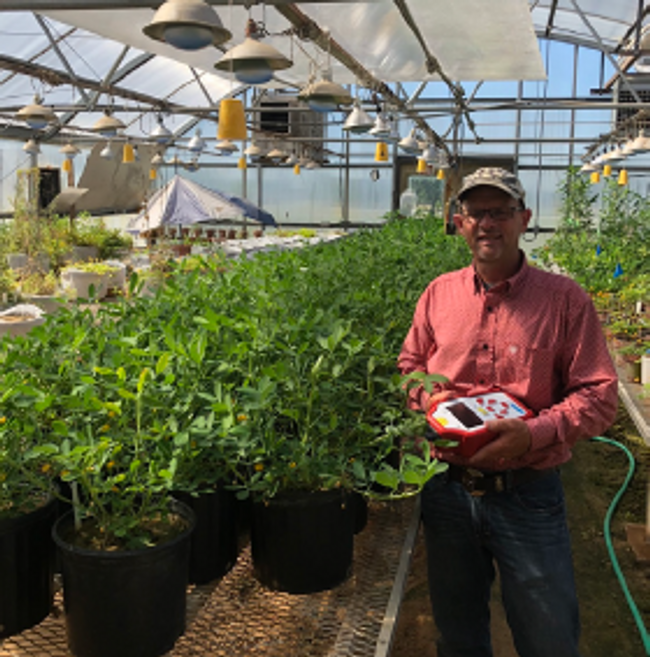Implementing technology on the farm has the potential to allow farm businesses to be more profitable, efficient and safe, according to NIFA. While on-farm automation can have many definitions, it is important to note that this isn’t just limited to robotics.
We spoke with Dr. Wesley Porter, an associate professor and extension specialist at the University of Georgia. According to Dr. Porter, “there are many opportunities to include automation on the farm. Some of these are in our everyday operations, such as planting, spraying, harvesting, sorting, packing, etc. Including automation into these operations typically makes the operations more effective and efficient because they can take on monotonous and repetitive tasks on the farm.”
Like all new technology, it comes with pros and cons.
“The pros of these technologies are that they can help with everyday tasks, operate longer time windows and overall have higher efficiency than a standard manned operation,” Dr. Porter said. “Some of the cons are the technology is new and relatively untested at the commercial scale. There will be resistance to removing operators from the tractor cab, and there is also a steep learning curve to new technologies, speci?cally the ones that operate on their own.”
Dr. Johnny Cason at Texas A&M AgriLife Research and Extension Center at Stephenville agrees that the steep learning curve remains the biggest con. Dr. Carson also believes automation can aid in addressing concerns regarding labor shortages.
“Labor is getting harder and harder to ?nd,” Dr. Cason said. “While issues with autonomous tractors are still complex, they seem more controllable than the variables present on say a high-speed road. If we can develop tools that are more economical or better for the environment, then I think we should pursue it.”
Looking for new equipment can be overwhelming. With the multitude of options and the many pros and cons for each, it can be hard to narrow down what you want. When looking for new equipment, Dr. Porter said the ?rst question should be return on investment.
“They should look at the cost of the new automated equipment, the bene?t of the equipment and what potential it has to their farm,” Dr. Porter said. “They should also ask what sort of training and support there is for operating the new piece of equipment. Support during breakdowns can be one of the most critical components of new equipment, because if you can’t get it back up and running in a timely fashion it is not any more useful than the original way of completing the task.”
Adding on to what Dr. Porter said, Dr. Cason says it’s bene?cial to estimate dollars per acre using the technology as compared to the dollars per acre using traditional equipment. It’s also important, though, to ask speci?c cost-related questions.
“There are costs of device, maintenance, backup batteries, etc.,” Dr. Cason said. “Depending on the type of technologies and level of utilization farmers consider incorporating into their farming practices, data processing services may be an additional cost.”
After speaking to John Deere, it�’s plain to see there are plenty of options for farmers to choose from. One exciting new addition is their autonomous tractor.
“When available for purchase, a farmer will be able to enable autonomy on a late model 8R or 9R series tractor and approved tillage tools,” a John Deere spokesperson said. “They will need to purchase additional hardware, such as the perception system and software to enable autonomy on their tractor and tillage tool. Once they have the hardware and software, the farmer will utilize John Deere Operations Center Mobile to monitor and control their machine once it is in the ?eld to carry out its work.”

In addition to the advancements at John Deere, universities like Texas A&M are also working on new technology to assist farmers.
“Our program is developing an unmanned aerial system (UAS) to help peanut breeders make selections in a timely and cost-effective manner,” Dr. Cason said. “We are currently validating algorithms for plant height and canopy volume and have begun exploring yield prediction algorithms. Soon we also hope to begin using UAS to estimate maturity and to make disease estimations.”
Another tool in development is the use of Raman spectroscopy (RS). This quick, portable, nondestructive assay (1) can determine difference in individuals down to the chemical bond level. This will help confirm fungal, viral and bacterial pathogens as well as distinguish nematode resistance and high oleic peanut cultivars. Dr. Cason is also working with Dr. Kiju Lee on using swarm robotics that eventually will be able to do things like selectively apply fungicides and herbicides to specific locations in a field.
“In this project, unmanned aerial vehicles (UAV) and unmanned ground vehicles (UGV) operate in groups to identify and solve problems in a farm setting,” Dr. Cason said. “One of the goals of the project is to create a tool that can eventually be used at the farm level by growers to automate tasks and reduce labor cost.”
The future is full of possibilities.
- Analysis to determine the presence, absence or quantity of one or more components.
